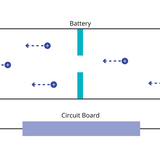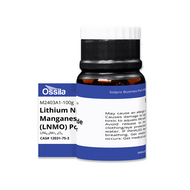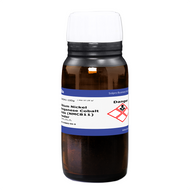Inorganic Electronic Materials
Inorganic electronic materials include metals, metal oxides, carbon based nanomaterials and more. They possess unique electrical, magnetic, or optical properties, that make them suitable for a wide range of electronic, optoelectronic, and energy-related devices. These materials typically feature ionic, covalent, or metallic bonding and often exhibit high thermal stability, mechanical strength, and well-defined electronic behaviors.
Inorganic electronic materials includes both conductors such as silver nanoparticles and semiconductors such as zinc oxide (ZnO) nanoparticles. Electrical insulators such as aluminum oxide (Al2O3) are also used to suppress charge recombination and increase the thickness of light absorber layer in solar cells. Barium titanate, a pyroelectric and piezoelectric material, is used in a wide range of electronic products, including capacitors, transducers, and optics.
Some materials exhibit other interesting magnetic properties such as iron oxide. Depending on the conformation, phase, and size, iron oxide nanoparticles can be antiferromagnetic, ferromagnetic or ferrimagnetic. Energy storage and conversion materials include Li-ion battery electrode materials such as LiFePO4 and lithium cobalt oxide.
Explore our range of inorganic electronic materials to help enhance your electronic devices.
Jump to: Browse Inorganic Electronic Materials Collections | Browse all Inorganic Electronic Materials | Resources and Support
Inorganic Electronic Materials Collections
Browse Inorganic Electronic Materials
Related categories: low dimensional materials, 2D materials, battery materials
Filter by Type:
Filter by Metal:
Filter by Application:
Page 1 of 2
Resources and Support
 What are Advanced Ceramics?
What are Advanced Ceramics?
Advanced ceramics are the next generation of ceramic materials. According to the 1993 Versailles project on Advanced Materials and Standards (VAMAS) an advanced ceramic material is defined as "an inorganic, non-metallic, basically crystalline material of rigorously controlled composition and manufactured with detailed regulation from highly refined and/or characterized raw materials giving precisely specified attributes".
Learn more... What are Transparent Conductive Oxides?
What are Transparent Conductive Oxides?
Transparent conductive oxides (TCOs) are metal oxides, such as zinc oxide and tin oxide, that are capable of conducting electricity whilst being optically transparent. This means they absorb a low number of electromagnetic waves within the visible region of the spectrum, appearing see-through.
Learn more... An Overview of Metal Oxide Nanoparticles
An Overview of Metal Oxide Nanoparticles
Metal oxide (MOx) nanoparticles (MONPs) are a class of nanomaterial with interesting and diverse chemical, optical, electrical and magnetic properties. Different metals bond to oxygen forming a variety of crystal structures under specific conditions. The shape and nanostructure of these materials effects their surfaces which in turn impacts the way they interact with light, electricity, magnetic fields and other materials.
Learn more...Metal oxides are used as photocatalysts due to their ability to accelerate chemical reactions when exposed to light. Examples include zinc oxide (ZnO), iron oxide (Fe2O3), titanium dioxide (TiO2) which possess useful electronic structures, light absorption properties and charge transport characteristics suited to photocatalysis.
Learn more...Metal oxide semiconductors are comprised of positive metallic ions connected to negative oxygen ions via ionic bonds. Typically in solid form, they are non-stoichiometric compounds, which means their chemical formula cannot be exactly represented by a ratio of small natural numbers.
Learn more... How Lithium-Ion Batteries Work
How Lithium-Ion Batteries Work
Lithium-ion batteries use the reversible lithium intercalation reaction. The battery has several important components to enable this intercalation.
Read more...









































